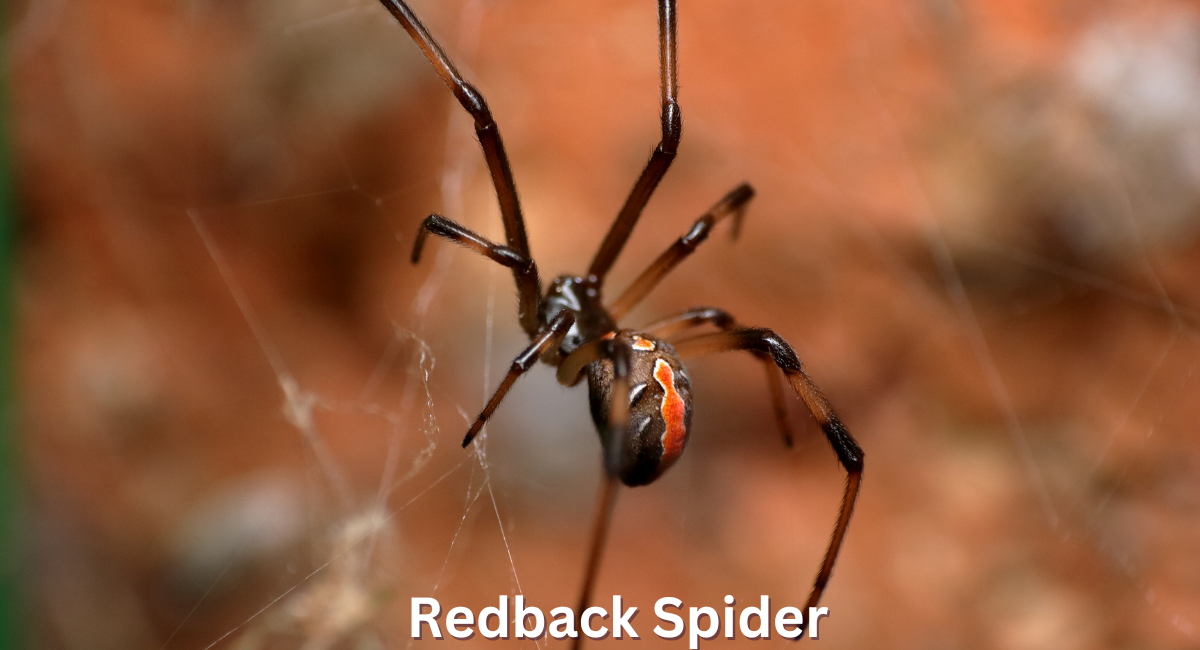Physical Characteristics
The Redback Spider, known scientifically as Latrodectus hasselti, is a fascinating arachnid that captures attention with its unique physical characteristics. Females are relatively small, measuring around 10 mm in body length. Males are even smaller, averaging about 6 mm. The female’s most distinguishing feature is her glossy black body with a red or orange hourglass marking on her abdomen’s underside. Males, in contrast, have muted colors, often appearing brown with lighter markings. These visual cues help identify the species and warn predators of their venomous nature.
With long, slender legs, the Redback Spider moves efficiently across its web and surroundings. It showcases remarkable agility in navigating its environment. While often discussed as a venomous species, other arachnids also deserve attention. One such example is the Chinese Bird Spider, known for its impressive size and striking appearance.
Both the Redback Spider and the Chinese Bird Spider have unique adaptations for survival. However, their habitats and behaviors differ significantly. Understanding these differences enhances our appreciation of spider diversity. It also highlights their crucial role in maintaining ecological balance.
Habitat and Distribution
Behavior and Diet
Venom and Human Interaction
The Redback Spider is best known for its venom, which contains neurotoxins that can cause serious health issues in humans. Although bites can be painful and lead to symptoms like nausea, sweating, and muscle pain, fatalities are rare due to the availability of antivenom. It’s essential to note that most bites occur when the spider is unintentionally provoked. Educating the public about safe practices around their habitats can help reduce the likelihood of encounters and bites. Just as awareness of the deadliest snakes in the world is crucial for minimizing risks associated with those species, understanding the behavior and habitat of the Redback Spider is equally important for public safety.
Implementing safe practices can greatly reduce the chances of negative interactions with venomous creatures. For instance, wearing gloves while gardening and checking shoes or outdoor gear before use can minimize risks. In many regions, knowledge about the includes recognizing their habitats and behaviors, which parallels the information needed to navigate environments where Redback Spiders may reside. By fostering awareness and understanding of these dangerous creatures, we can help create safer interactions with both spiders and snakes in our everyday lives.
Ecological Role
Despite their fearsome reputation, the Redback Spider plays a crucial role in controlling insect populations. By preying on common pests, they contribute to maintaining the ecological balance in their habitats. This natural pest control helps reduce the need for chemical pesticides, promoting a healthier environment. The presence of the Black Widow Spider also supports the food web, providing nourishment for larger predators, including birds and other arachnids. Understanding the ecological importance of the Black Widow Spider can shift the perspective of many who view them solely as threats.
Moreover, the Redback Spider is often misunderstood due to its venomous bite and striking appearance. However, these spiders are not aggressive and typically bite only in self-defense. Education about their behavior and benefits can foster a greater appreciation for their role in the ecosystem. By acknowledging the significance of the Redback Spider in the world, we can promote a more harmonious coexistence between humans and these fascinating arachnids, recognizing that they are essential players in maintaining a balanced ecosystem.
Conservation Status
Currently, the Redback Spider is not considered endangered. However, habitat destruction due to urbanization poses a threat to their populations. Conservation efforts aimed at preserving natural habitats and promoting biodiversity are essential for sustaining Redback Spider populations. As one of the deadliest spiders in the world, awareness campaigns can educate the public about the significance of these spiders in ecosystems, encouraging coexistence rather than eradication. By fostering a positive image of the Redback Spider, we can ensure its continued presence in the wild.
Efforts to conserve the Redback Spider focus on reducing human impact and promoting awareness of their role in insect control. These spiders help maintain ecological balance by regulating pests that harm crops and spread diseases. Conservationists aim to change public perception by highlighting their benefits. While they are among the most feared, their contributions to nature are invaluable. Such initiatives can create a harmonious relationship between humans and spiders, allowing both to thrive in shared environments.
Conclusion
The Redback Spider is a fascinating yet misunderstood species that deserves respect and understanding. While their venomous bite can be a concern, their ecological benefits far outweigh the risks they pose. By learning about their characteristics, behavior, and ecological roles, we can coexist peacefully with these arachnids. The Redback Spider is not just a fearsome creature. It plays a vital role in the ecosystem by controlling insect populations. This helps maintain the natural balance. With proper management and awareness, we can appreciate its beauty and significance. At the same time, we can ensure our safety and protect the environment.



